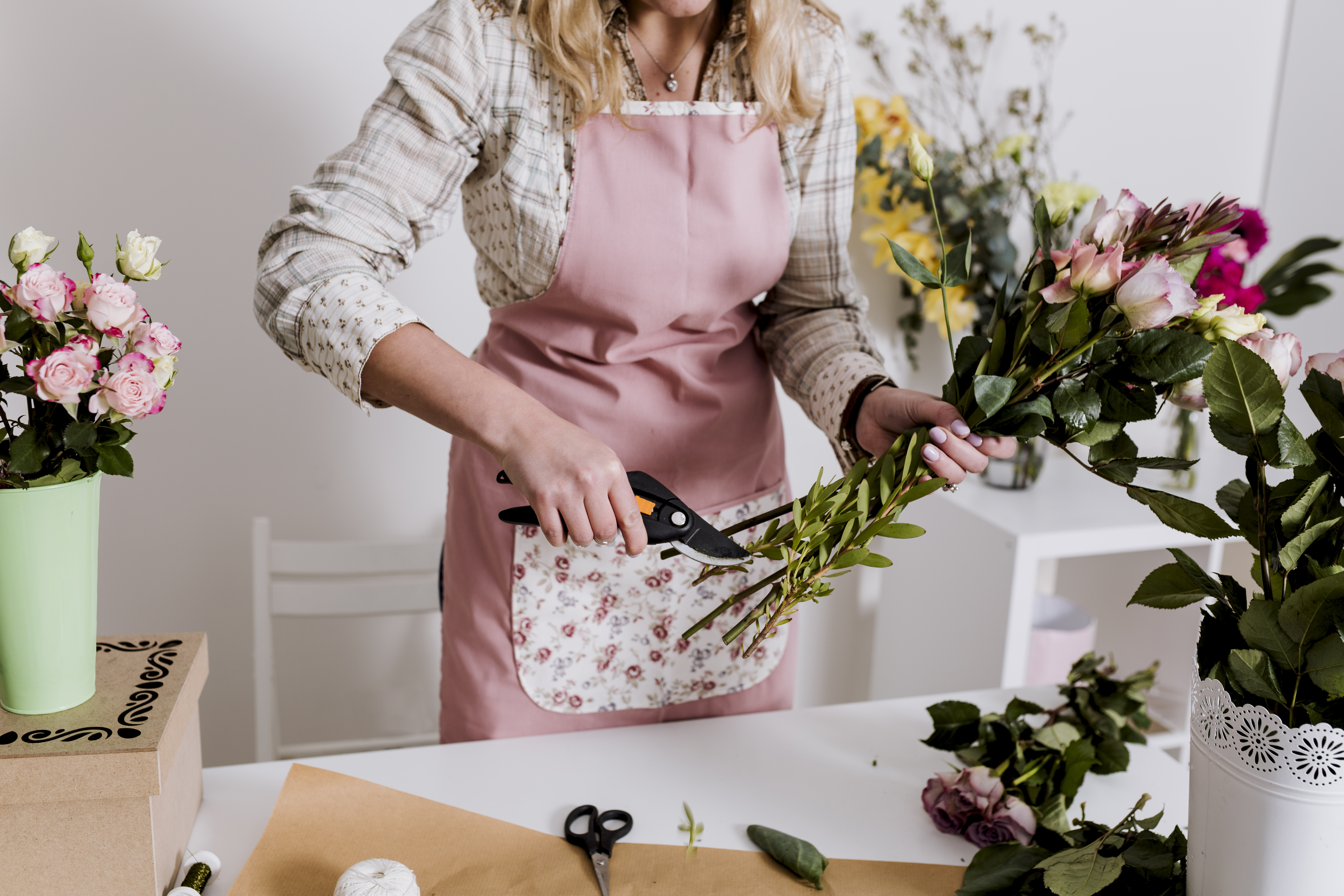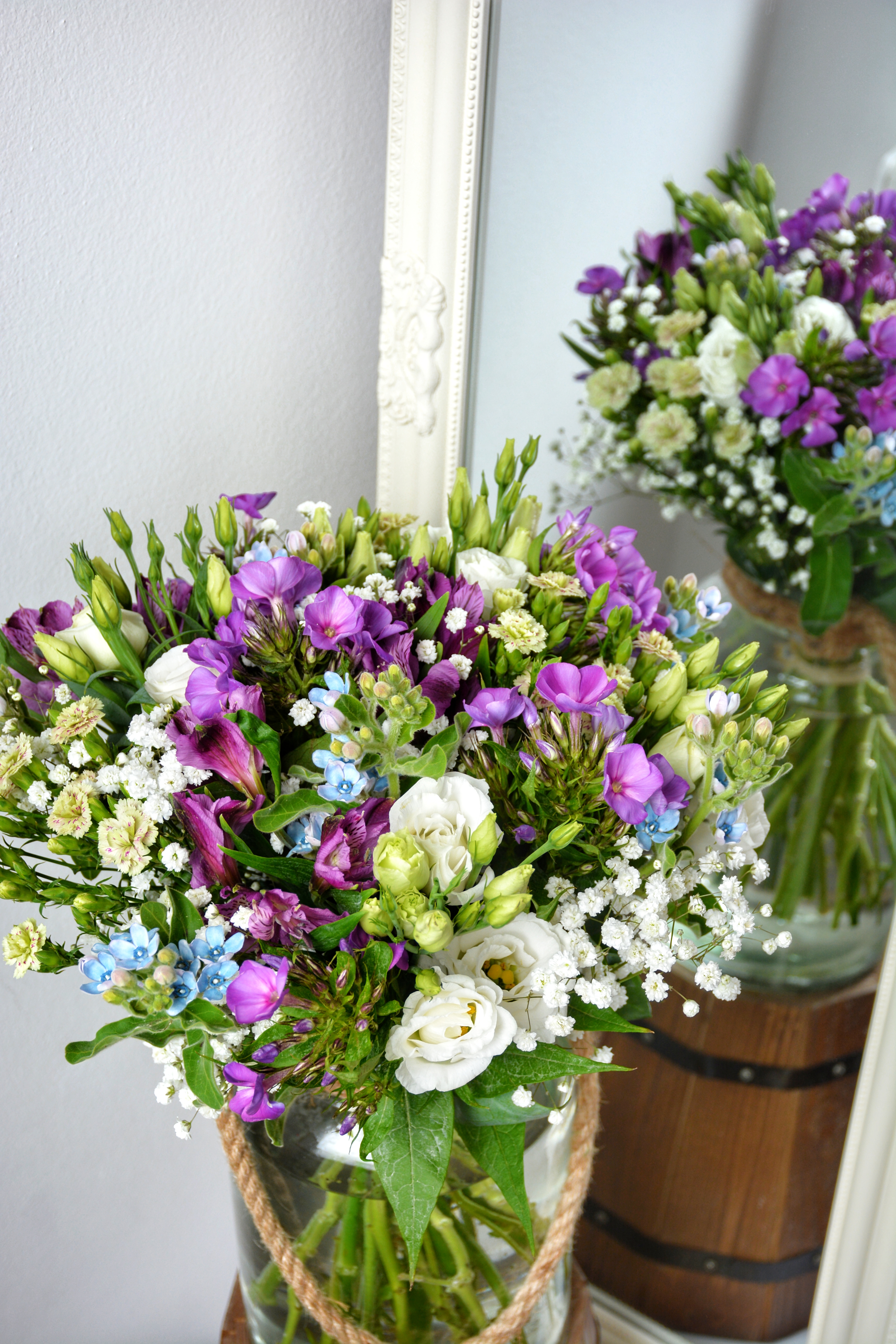Fresh flowers bring a smile to our faces every time we walk by them. Everyone loves a beautiful bouquet! But not everyone knows how to properly care for their bouquet and keep it as beautiful, fresh, and vibrant as possible for as long as possible. Nowadays, it is not uncommon for cut flowers to last in a vase for up to one week. But how to care for flowers so they last that long? Read on to discover some tips that will prolong the lifespan of your bouquet and your enjoyment of it!
How to maintain long-lasting beauty?
Even a pocket coin or aspirin can help! These tips might surprise you! But repetition is the mother of wisdom, so let's start with a few basic methods.
If you want to wake up with a fresh bouquet on your table the next morning, regularly change the water and trim the flowers before placing them in the vase. A diagonal cut on roses enlarges the surface area on the stem through which they can drink. Chrysanthemums are best snapped off at the ends, and sunflowers prefer hot water right after trimming.
In any case, it's essential to trim the stems under running water. The water should be lukewarm to prevent unwanted air from entering the stems.

Why do flowers relate to people?
Our bodies are set to a body temperature that reacts to the cold or heat around us. Flowers are similar! Especially in winter, it's essential to give flowers time to absorb temperature changes. That's why it's recommended to leave the bouquet wrapped in wrapping paper for at least half an hour after arriving home.
We also recommend giving flowers space. The vase should not be placed next to fruit, as it contains ethylene, which causes flowers to wilt. Instead, leave some free space between the flowers and other objects. Every plant appreciates the chance to breathe freely, so it's essential to untie the bouquet immediately in the home environment.
“Each of us is different” – this also applies to flowers!
It's no secret that every type of flower is unique. This uniqueness extends to their care needs as well. The biggest difference is in the amount of water required.
- Hydrangeas and roses prefer water that fills up to half the height of their stems.
- For tulips, gerberas, and chrysanthemums, the water should not exceed one-third of their stems.
- Sometimes it’s best to submerge the entire stems. This should be done when the flowers start to droop due to insufficient water intake.
But for all flowers, regardless of type: Remember to change the water daily!

What else you might not know? Some final tips!
Leaves are the lungs of the flower. They need to breathe and have access to fresh air. Be careful that the leaves do not get into the water when placing the bouquet in the vase. The water is only for the stems!
If you have a cooler room at home, transfer the flowers there at least overnight. Avoid direct sunlight and other heat sources, such as radiators or drafts from doors.
In a ceramic or glass vase, only strong and well-nourished flowers should be placed! Wilted flowers should be discarded immediately.
It is said that even unconventional helpers can contribute to the freshness of cut flowers. These include, for example, charcoal, which, like copper coins in the vase, is supposed to prevent the formation of mold and the growth of unwanted bacteria.
Similar effects are said to be provided by crushed aspirin tablets. Aspirin improves the quality of the water, so it only needs to be changed or topped up once every three days.









